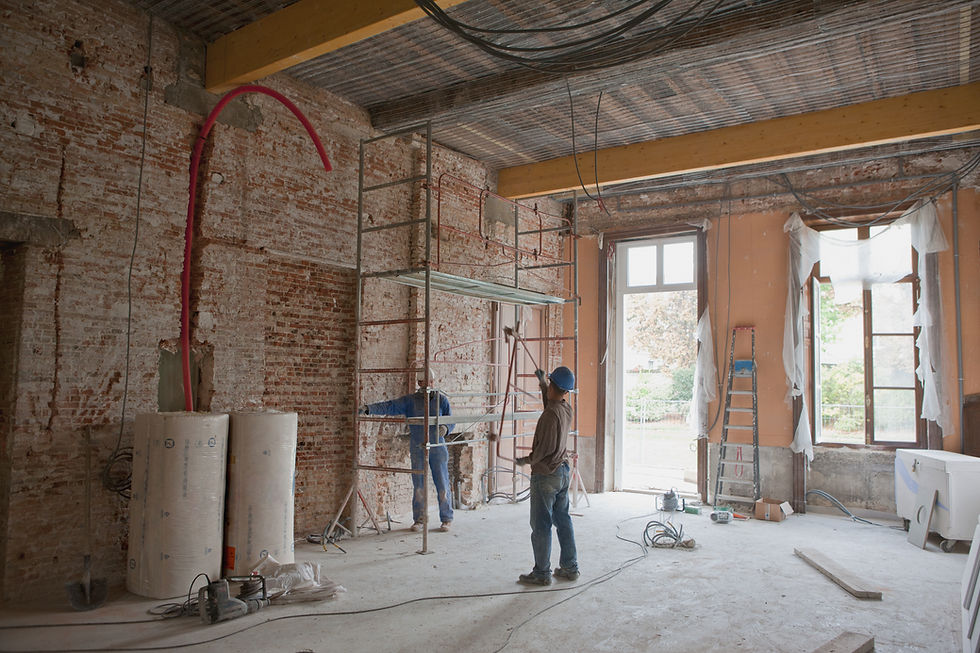The Impact of Improvements on Lease Relationships: The Case of Construction and Sale Without the Landlord's Consent
- Edson Ferreira
- Dec 3, 2024
- 3 min read

The relationship between landlord and tenant can become complex when the lease agreement involves the construction of improvements, particularly when these improvements are integrated into the landlord's property.
In this context, a case where the tenant constructs a building on leased land, with a clause stipulating that the improvements will be incorporated into the landlord’s property at the end of the lease term, raises questions about the validity of possession, usage rights, and contractual obligations.
The analysis becomes even more delicate when the tenant sells the business assets and the constructed building without the landlord’s consent, in violation of the lease agreement.
1. Legal Nature of the Contract and Incorporated Improvements
In this case, with all improvements, including the constructed building, to be incorporated into the landlord’s property at the end of the lease. Legally, this clause establishes that the improvements, although made by the tenant, will become the property of the landlord, as the construction becomes inseparable from the land.
This stipulation aligns with Article 35 of the Tenancy Law (Law 8.245/91), which allows the parties to define rules regarding improvements, respecting contractual autonomy.
2. Sale of the Business Assets and Contractual Implications
The sale of the business assets and the incorporated construction, conducted without the landlord’s express consent, constitutes a potential contractual breach. Given the nature of the incorporation clause, the alienation of the constructed property without consent contravenes the principles of the social function of the contract, as well as the duties of good faith and contractual loyalty.
Jurisprudence has consistently upheld that the landlord must be aware of and consent to the transfer or sublease of the agreement to ensure compliance with the original terms. In this specific case, the sale without the landlord’s consent could be interpreted as a breach of contract, as the tenant effectively transferred the use of a property that would, at the end of the lease, belong to the landlord.
3. Consequences of Contractual Breach
In cases of contractual non-compliance, the landlord has the right to challenge the validity of the sale and sublease executed by the tenant. According to the Civil Code, specifically Articles 421 and 422, a breach of contract entitles the injured party to seek termination of the agreement, in addition to claims for compensation for losses and damages.
The landlord can thus pursue judicial dissolution of the lease agreement, demanding the immediate return of the property and financial compensation if it can be demonstrated that the unauthorized sale caused harm.
4. Sublease and the Landlord’s Right to Object
Lease agreements often restrict the tenant’s ability to sublease or alienate the leased property, typically requiring the landlord’s express consent for such actions. In this case, the tenant not only sold the business assets but also transferred possession of improvements that would ultimately belong to the landlord.
This opens the possibility for the landlord to seek a judicial declaration of nullity of the sublease, citing the lack of consent, and, if necessary, request repossession of the property.
Final Considerations
This case highlights the importance of careful analysis in lease relationships when tenants invest in property improvements, especially in long-term contracts.
Jurisprudence and legal doctrine emphasize the protection of landlords' rights to maintain their property in accordance with agreed terms, with prior consent serving as a critical safeguard to avoid disputes and protect the rights of both parties.
In cases of non-compliance, it is incumbent upon the landlord to seek judicial remedies to recover damages and ensure full adherence to the lease agreement.


